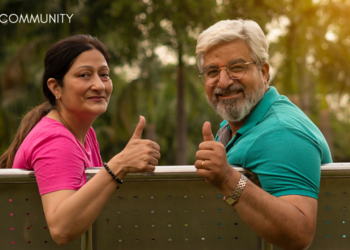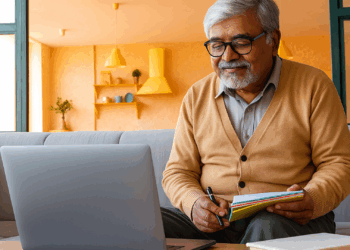Chronic pain is a common issue among the elderly. However, they often ignore and deal with it in their ways till matters worsen. For those suffering from arthritis, diabetes, neurological diseases, cancer, or even cardiovascular issues, this is a given. Some studies have found that back pain is the most common among seniors. Also, vertebral compression and osteoporosis because of aging are the cause of pain in post-menopausal women. Even Vitamin D deficiency emerged as a significant cause of back pain in women. Seniors learn to live with the pain and describe it differently than young people. They use words such as discomfort and aches and may visit doctors for options to reduce pain through prescription medicines. Of course, a few explore alternative therapies for pain management. However, some special challenges exist for effective pain management in seniors, especially when they are on regular medications.
Physiological changes

Join Now >
The physiological issues come into play and should be understood to help them with pain management. Also, for those cognitively impaired, some special methods are needed to understand and manage their pain, as they may not able to express unlike others.
The livers of older adults are smaller, with less blood circulation and reduced hepatocytes. This altered liver condition and certain regular medications can affect the body’s metabolism. Also, seniors have higher body fat and reduced body water and muscle mass. Even renal functions can be reduced after a certain age and affect many body functions.
Additionally, for those seniors with co-morbidities, an increased risk of drug-related adverse side effects is a reality. Even psychosocial factors such as depression, loss of independence, economic constraints, etc., are challenges affecting pain management in seniors.
Psychological issues may be linked to a general resignation to the pain as part and parcel of old age and not wanting to do anything about it. It could also be isolation or depression, or even economic factors, as pain management usually is long-drawn. For those with mobility issues, it also means relying on someone to go for the tests, diagnosis, and subsequent physiotherapy sessions. Even though the seniors may not explicitly express their pain, it is seen and felt in many ways.
Pain behaviours
When hit by pain, the behaviour of seniors changes in many ways, both physically and psychologically.
Some behaviours that people around can observe are:
- Changed mobility and gait
- Restricted movement
- Changes in sleep patterns
- Changes in appetite
- Irritation or aggression
- Face grimaces
- Rapid blinking
- Moaning or groaning
When you observe such behaviour, it is better to approach a doctor and get a proper pain assessment done to understand the root causes. Also, the treatment depends on family and medical history and the severity of the pain. It may include physical examination, lab tests, X-rays, and other imaging tests as needed. Sometimes, the pain is due to a specific physiological issue that is easily treatable and disappears once you address the root cause. In some cases, though, the pain may be something you cannot eliminate totally due to a combination of issues and would need a pain management plan.
Treatment options
The non-pharmacological options include physiotherapy, Interferential therapy (IFT), ultrasound physiotherapy, acupuncture, massage therapy, etc. Even topical application of pain relief creams, patches, etc., are part of non-pharmacological options. Many alternative therapies, such as biofeedback, music therapy, meditation, yoga, aromatherapy, etc., are also part of non-pharmacological options.
Cognitive behavioural therapy helps patients learn coping skills through various techniques to increase their physical activities and psychological confidence. The only issue with non-pharmacological treatment options is the time, which can be long duration. And there is the likelihood of patients losing out on their commitment and confidence to keep going.
The pharmacological options include non-steroidal anti-inflammatory drugs (NSAID), anticonvulsants, antidepressants, and more. Managing side effects is one of the special challenges for those on medications. A holistic approach of a combination of therapies that suit every individual differently is needed. There cannot be a one-size-suits-all approach for pain management in seniors. An invested discussion, diagnosis, and carefully considered treatment plan can go a long way in helping seniors overcome the pain or manage it competently.









